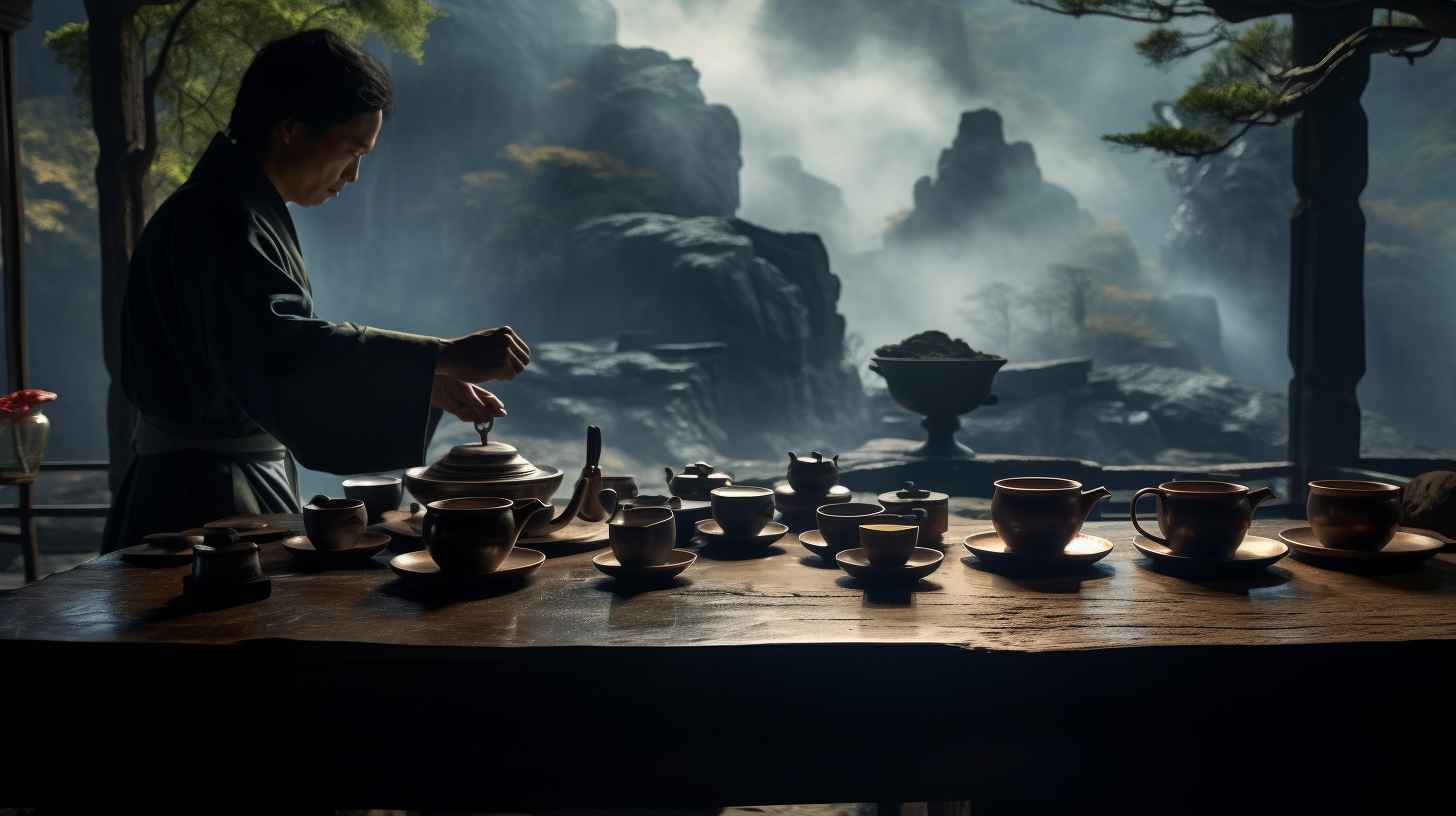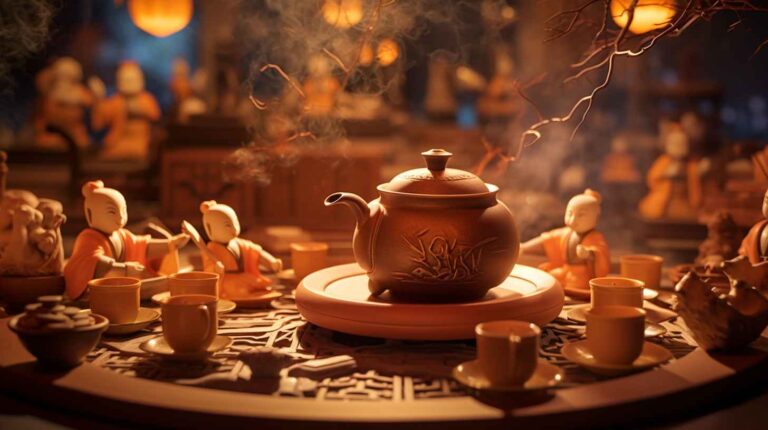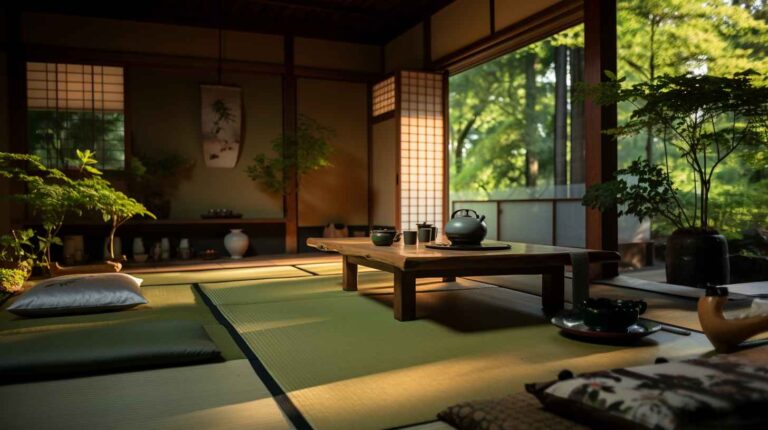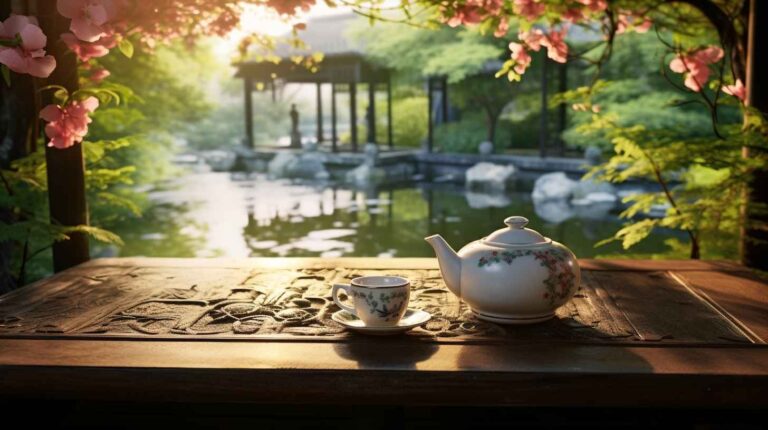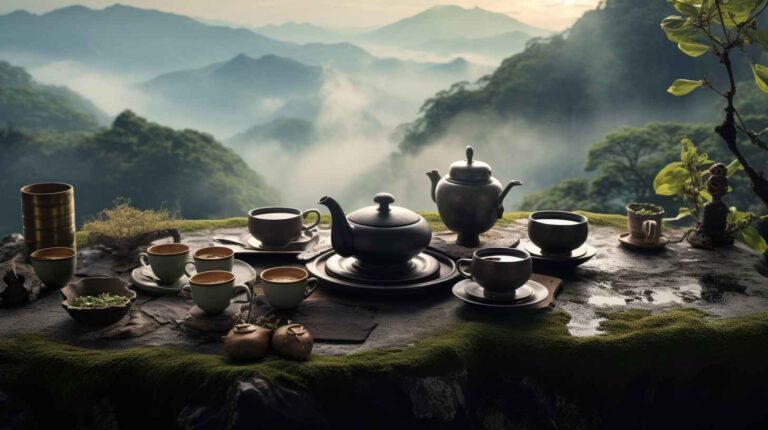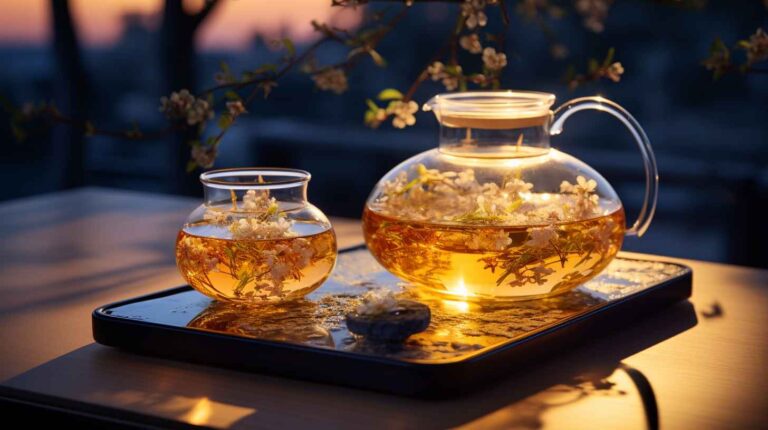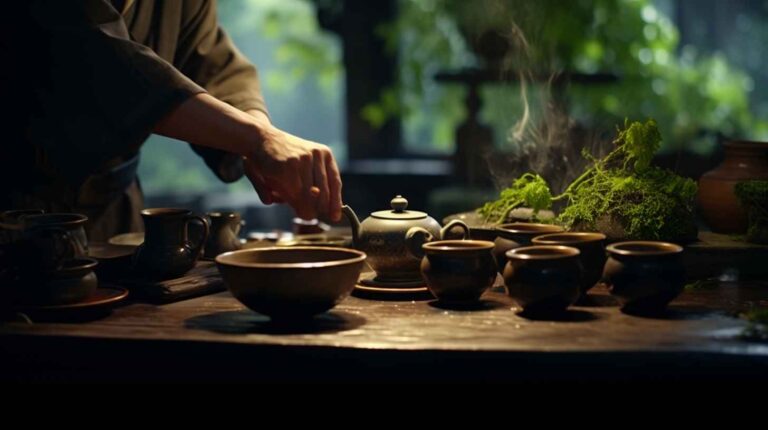The Perfect Pour: Mastering the Art of Tea Brewing
Introduction
Across the vast stretches of our world, tea represents more than just a drink to quench one’s thirst. For many, it’s a cultural emblem, an intimate ritual, and even a philosophy that defines a way of life. The process of brewing tea might appear simple at a cursory glance, but delve deeper, and you discover a universe of nuance and sophistication that can transform an ordinary cup into a sublime experience.
The Rich Tapestry of Tea Leaves
Before we embark on the journey of brewing, let’s first pause and pay homage to the leaf itself, the epicenter of this divine concoction. Originating from the Camellia sinensis plant, the myriad of teas we relish today are birthed from the distinct processing techniques each leaf undergoes:
- Green Tea: Renowned for its crisp, verdant flavor profile, green tea is often linked with wellness and vitality. Its minimal oxidation during processing retains its fresh character and subtle, grassy notes.
- Black Tea: Boasting a robust character, black tea undergoes a full oxidation process. This imbues it with rich, often malty undertones, making it a favorite for those who crave a strong brew.
- Oolong Tea: Treading the middle path between green and black teas, Oolong represents a beautiful symphony of flavors. Semi-oxidized, it offers a delightful balance of fresh and mature notes.
- White Tea: A delicate treasure, white tea undergoes minimal processing, thus capturing the leaf’s purest essence. With a gentle aroma and flavor, it’s like a whispered secret between nature and the drinker.
- Pu-erh Tea: Aged like fine wine, Pu-erh tea can be a connoisseur’s dream. With flavors deepening and evolving over years, or even decades, each sip tells a story of time.
Water: The Unsung Hero in Tea Brewing
When thinking of tea, it’s easy to focus solely on the leaves. However, water, which forms the very foundation of this beverage, plays an instrumental role. The quality and type of water can either elevate or diminish the tea’s flavor. Natural spring water, revered for its purity and light mineral content, is often considered the pinnacle for brewing. Its neutral profile ensures that the delicate nuances of the tea leaves shine through without any interference.
The Crucial Role of Temperature
One of the cardinal sins in the world of tea brewing is to dismiss the importance of temperature. A deviation of even a few degrees can metamorphose a tea’s character. To aid the uninitiated, here’s a guide:
- Green Tea: Best brewed at 175°F (80°C) to preserve its delicate notes.
- Black Tea: Prefers a hotter environment, ideally 200°F (93°C), to unleash its full-bodied essence.
- Oolong Tea: Finds its sweet spot at 190°F (87°C), ensuring the balance between its dual character is maintained.
- White Tea: With its tender nature, 185°F (85°C) is the optimal brewing temperature.
- Pu-erh Tea: A boiling point of 212°F (100°C) extracts the depth and richness this aged tea offers.
The Art of Steeping: A Test of Time and Patience
The duration for which tea is allowed to steep is akin to a painter choosing how long to leave the brush on the canvas. It determines the depth of color, flavor, and aroma. While general guidelines are provided, it’s essential to note that the beauty of tea lies in its adaptability. These guidelines serve as mere starting points:
- Green Tea: A short steep of 1-2 minutes retains its freshness.
- Black Tea: A lengthier 3-5 minutes allows its bold flavors to come to the fore.
- Oolong Tea: Similar to black tea, it enjoys 3-5 minutes of steeping.
- White Tea: A range of 2-5 minutes, depending on the drinker’s preference for strength.
- Pu-erh Tea: The steeping duration varies, depending on the tea’s age and specific type. A tea as complex as Pu-erh often requires experimentation to find the perfect timing.
Brewing Vessels: A Blend of Aesthetics and Functionality
The choice of a brewing vessel can be likened to a musician selecting their instrument. Different cultures have given rise to various tools, each adding a unique touch to the brewing experience:
- Teapots: Spanning from the elegantly crafted British porcelain pots to the earthy Chinese Yixing clay, these vessels not only brew but also make a statement.
- Gaiwans: These traditional Chinese lidded bowls are not just functional but also aesthetic marvels. Perfect for those who love observing the leaves slowly unfurl and reveal their beauty.
- Infusers: Ideal for modern, on-the-go lifestyles, infusers ensure a hassle-free experience, especially for single servings.
- Samovars: With its origins in Russia, the samovar is not just a brewing apparatus but a symbol of hospitality. It’s a metal container, often ornate, equipped for both heating and brewing tea.
Diving Deeper: Advanced Techniques in Tea Brewing
While the fundamentals of tea brewing are essential, diving deeper into the vast ocean of tea culture reveals advanced techniques that truly showcase the depth and breadth of this beverage:
- Gongfu Cha: This method is not just about brewing tea; it’s an art form. Emphasizing the essence of quality and precision, Gongfu Cha showcases the multifaceted flavors of tea, especially oolongs and pu-erhs. By using a higher leaf-to-water ratio, this technique involves multiple short infusions, each revealing a diverse spectrum of flavors with every subsequent pour. The entire ceremony, often conducted using Yixing teapots and petite teacups, is a dance of grace, reverence, and passion.
- Kyusu Brewing: Rooted deeply in Japanese tea culture, the kyusu, with its characteristic side handle, plays a pivotal role, especially when brewing delicate teas like sencha or gyokuro. Its design, derived from centuries of tea appreciation, ensures an even brewing process and facilitates smooth pouring, enhancing the overall tea-drinking experience.
- Cold Brewing: As the mercury rises, cold brewing becomes a favorite among tea enthusiasts. By steeping tea leaves in cold water over an extended period, typically 6-12 hours, the resultant brew is refreshingly mild and sweet. Especially popular with green and white teas, cold brewing extracts different compounds from the leaves, leading to a smoother and less astringent taste.
Tea and Mindfulness: A Symphony of the Senses
In today’s fast-paced world, moments of tranquility are precious. Brewing tea offers an oasis of calm, a sanctuary where one can reconnect with oneself. It’s more than just about quenching thirst; it’s a meditative process. The meticulous attention to detail, from the gentle heating of water to the mesmerizing dance of tea leaves, offers a momentary escape from the chaos of daily life.
Traditional ceremonies, such as the Japanese ‘Chanoyu’ and the Chinese ‘Gongfu Cha’, are not just methods of brewing tea but profound experiences. They emphasize mindfulness, grace, and a deep connection between the brewer, the tea, and the environment. Every step, every gesture, every sip is an exercise in being present, in savoring the here and now.
The Exciting World of Experimentation
Tea is an ever-evolving journey, and its vast landscape beckons explorers. While guidelines and traditions provide a solid foundation, they are not set in stone. The real charm of tea lies in its adaptability and the boundless possibilities it offers.
A slight tweak in the water temperature, an extra minute of steeping, or venturing into uncharted territory with a new tea variety can dramatically transform the resultant brew. Over time, every tea enthusiast develops their signature style, a unique blend of tradition and personal preference.
Tea Pairings: A Gourmet Adventure
The world of gastronomy has long recognized the power of pairings. Just as a fine wine can enhance the flavors of a gourmet dish, the right tea can elevate a culinary experience to new heights:
- Green Tea: Its subtle, fresh notes make it an ideal companion for seafood dishes, light salads, and even sushi. The clean aftertaste of green tea can refresh the palate, making every bite seem anew.
- Black Tea: With its robust character, black tea beautifully complements hearty dishes. Think of succulent red meats, flavorful curries, and even rich desserts. The malty undertones of the tea can resonate with the deep flavors of such dishes.
- Oolong Tea: Its versatility is Oolong’s strength. Whether you’re indulging in grilled vegetables, slightly spicy dishes, or even creamy pastas, Oolong can be the perfect partner, harmonizing with a broad spectrum of flavors.
- White Tea: With its delicate nature, white tea pairs wonderfully with light pastries, fresh fruit, and even mild cheeses. The gentle flavors can underscore the subtleties of such foods without overpowering them.
- Pu-erh Tea: The depth and richness of Pu-erh tea find their match in dishes like mushrooms, duck, or even rich stews. The layered flavors of the tea can parallel the complexities of such dishes, making every bite and sip a delightful exploration.
In Conclusion: The Soulful Dance of Tea Brewing
The world of tea is enchanting, weaving together elements of nature, culture, and personal expression. Brewing tea is more than just a process; it’s a dance. A dance where water, leaves, heat, and time move in harmony, choreographed by the hand that brews.
The beauty of this dance lies in its fluidity. While traditions and guidelines offer a framework, it’s the individual’s touch, their unique flair, that breathes life into it. As you stand poised to pour your next cup, always remember that with tea, you’re not merely drinking a beverage. You are embarking on a soulful journey, one that unfolds with every sip, inviting you to explore, savor, and celebrate the timeless magic of tea.
